Design Through Making
Design Through Digital Making:
A Human-System Collaboration Framework
Niloofar Nikookar
In Partial Fulfillment of the Requirements for the Degree Master of Science in the School of Architecture
Georgia Institute of Technology
August 2020
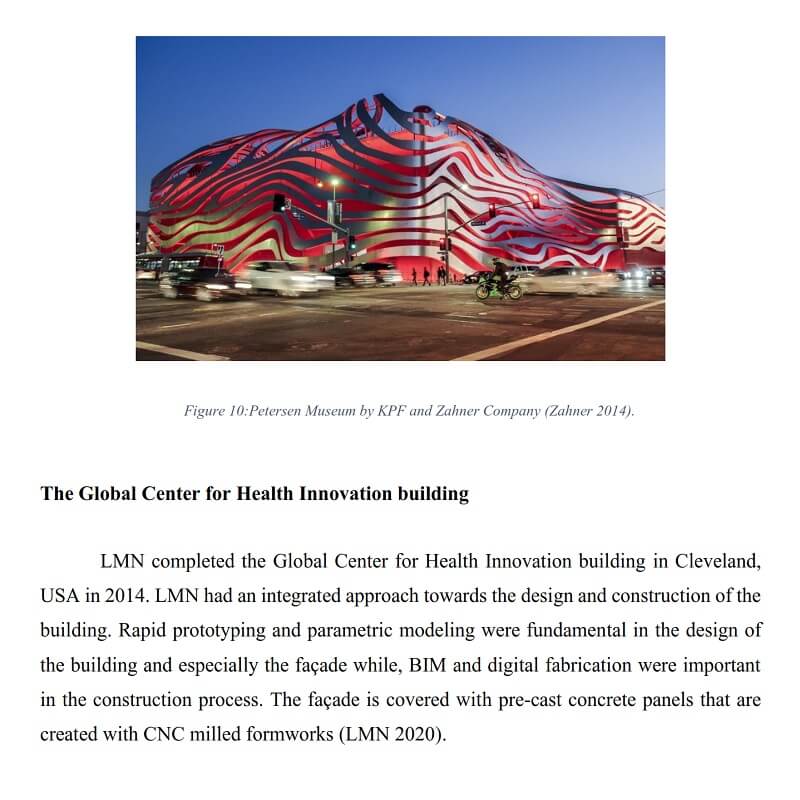
In the last 30 years, a large number of experimental architectural projects and whole buildings have been realized using computationally driven fabrication machines and robotics. It is widely claimed that these new technologies are changing the way we think, construct, operate, and design.
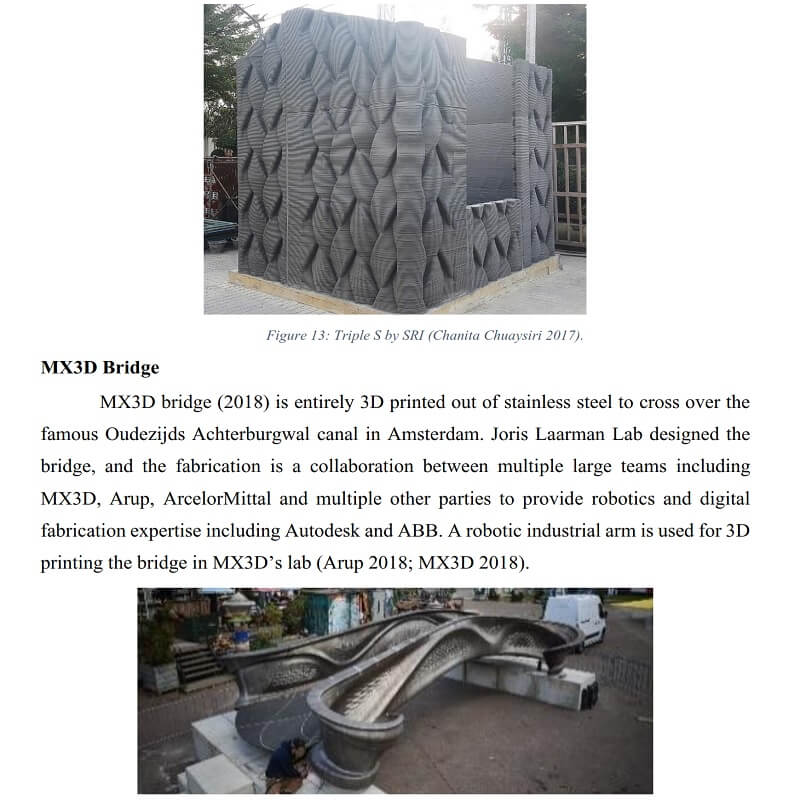
However, the degree to and areas in which these changes are happening are debatable. This thesis by Niloofar Nikookar examines recent projects where representational and fabrication technology is integrated into the architectural design and production process.
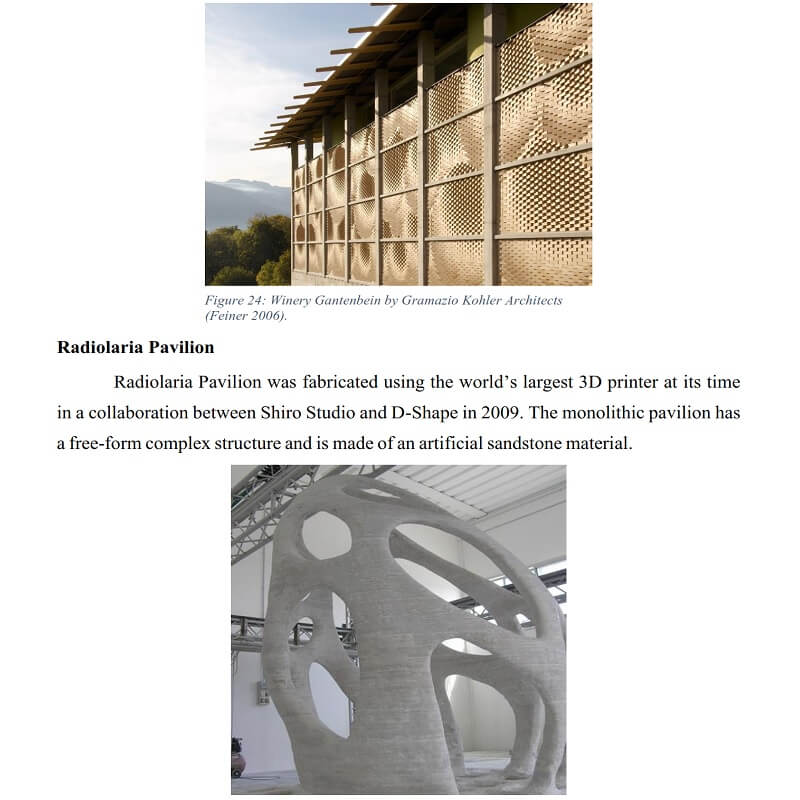
The thesis investigates how new tools and techniques are being adopted, interrogates if their use results in the generation of new design and making paradigms, and identifies potential areas of change and growth.
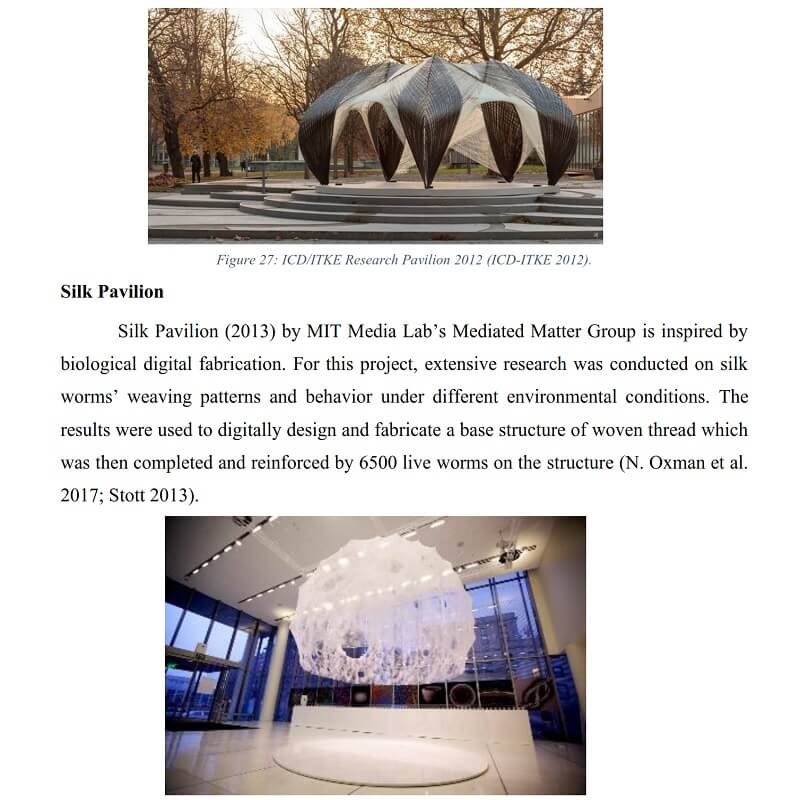
The thesis provides an overview of existing design and making paradigms, including alternatives to the commonly accepted linear model in which design happens in advance of construction and informs, but does not direct or guide construction. In these alternative models, design and making happen more simultaneously and develop together through collaboration and interaction.
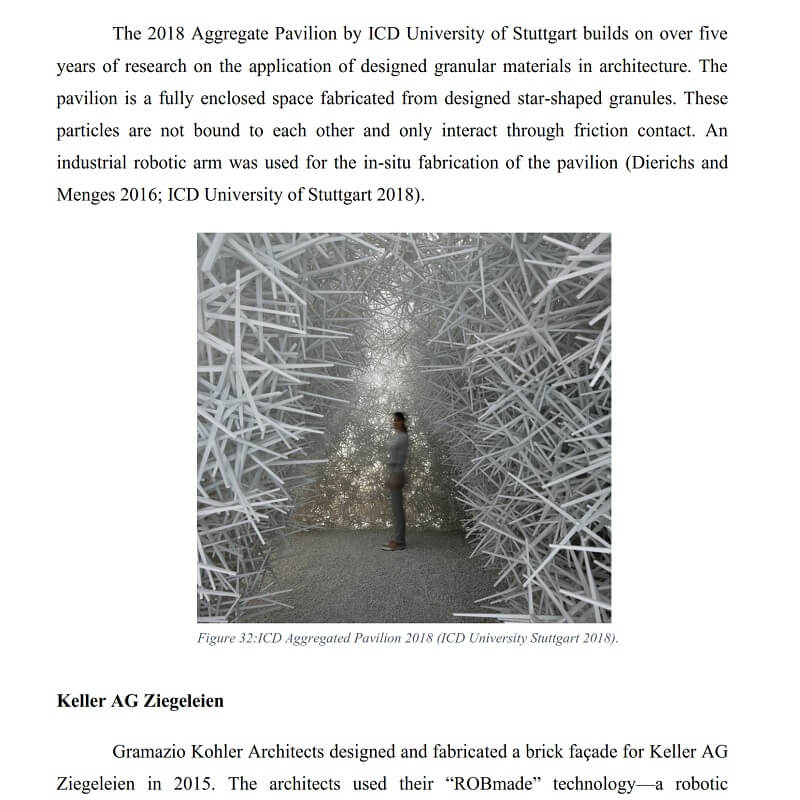
Through that discussion, the concept of emergent design—design determined through the process of its creation—is unfolded in the context of collaborative design models coupled with digital fabrication tools. The study accomplished through analysis of forty published projects that claim impactful integration of digital tools – with the explicit goal of creating digital models that drive production.
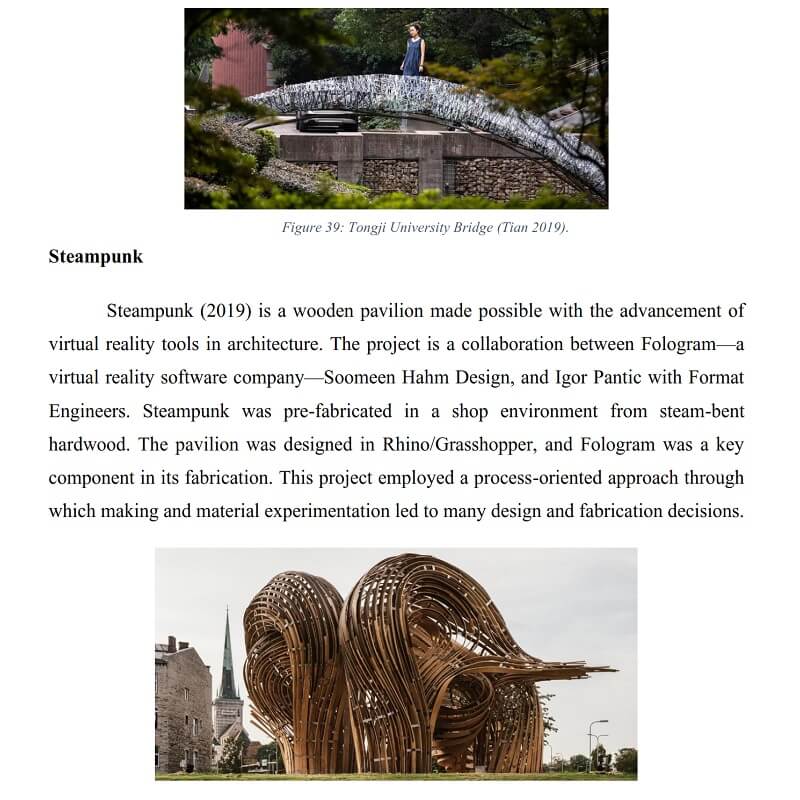
The projects are different in scope, size and program. They are analyzed in terms of their implemented techniques, tools, and system agency and are critiqued to identify patterns and trends in their design and making processes. These elements are instructive for determining the possibility of human-system collaboration within these projects.
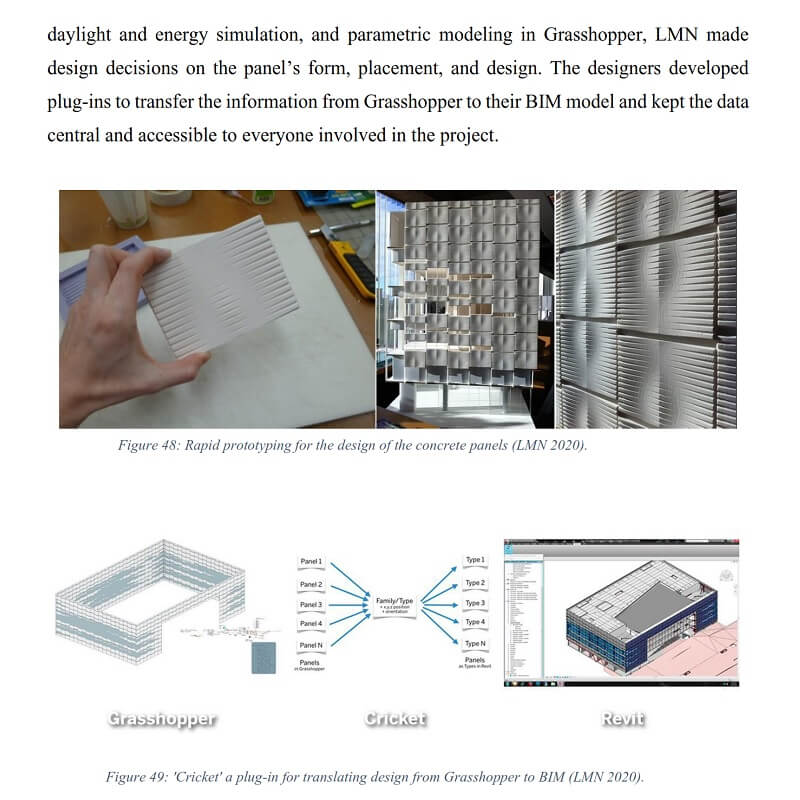
In order to qualify the degree of that digital autonomy and collaboration in these projects, scales are developed to facilitate the comparison of the projects to discover trends and draw conclusions. At the end of the thesis, several of the most impactful projects are described more deeply as case studies.
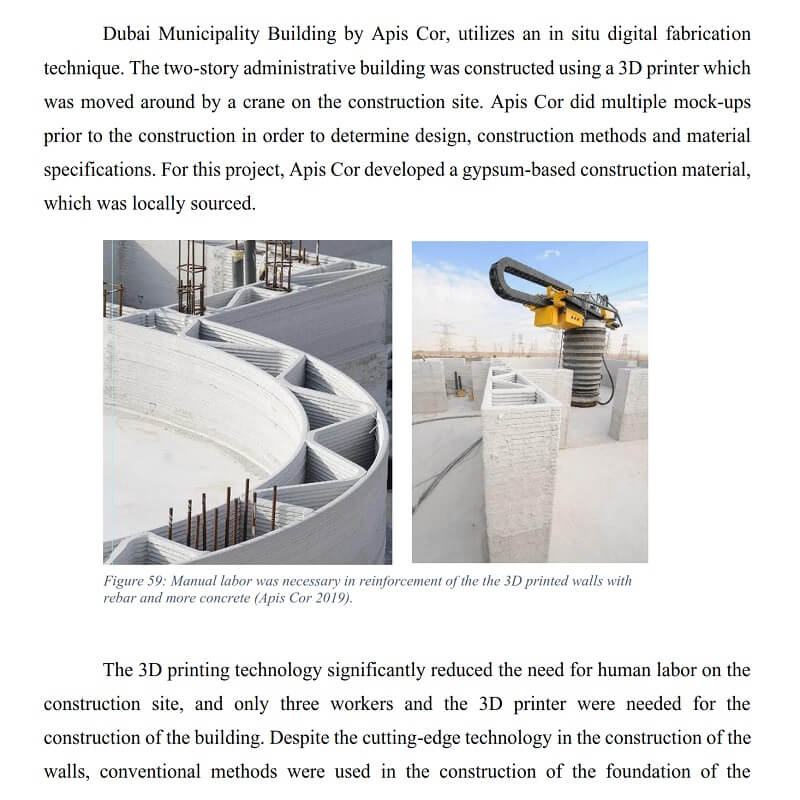
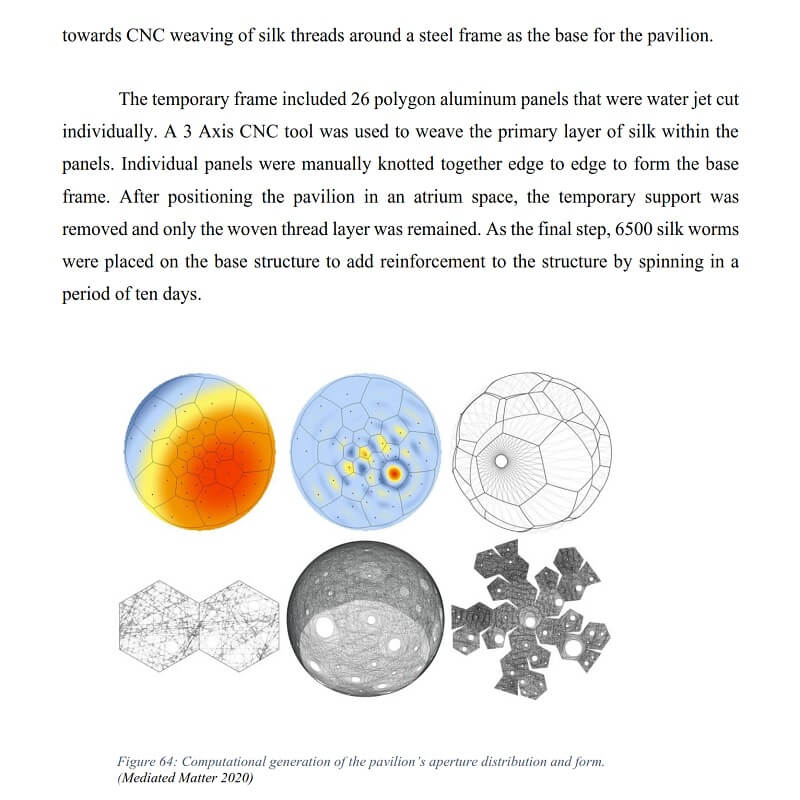
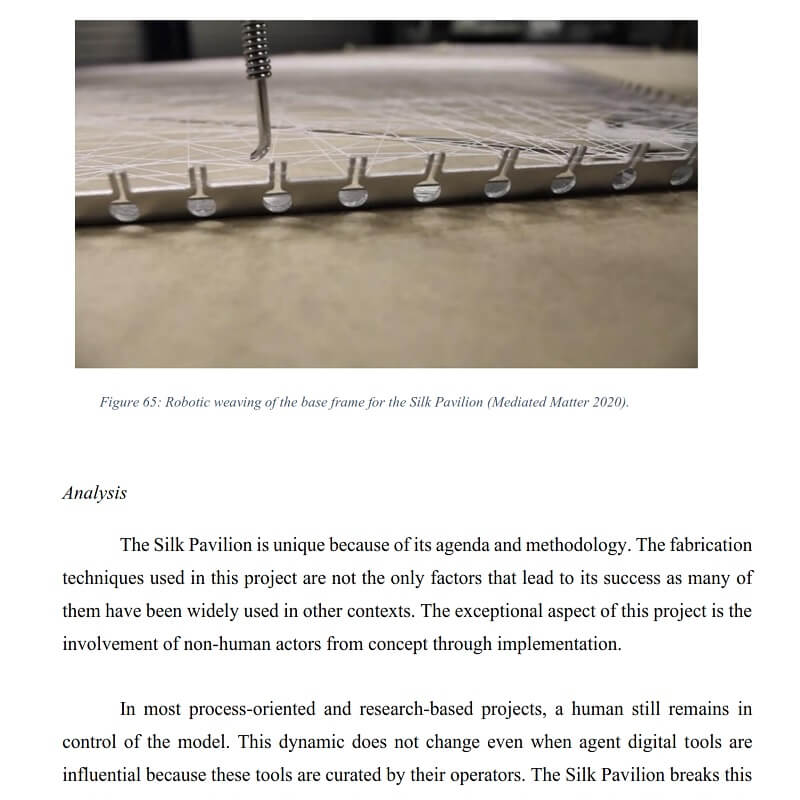




























Comments